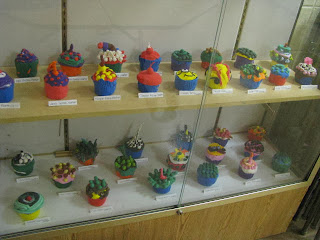It's not that I have a problem with The Common Core. I don't really even understand it all (or really even kinda) right now. The thing I have a problem with is all this testing. REALLY? Is this what we want to do to children? Pre-test, post-test, summative test, formative test, state test, DRA, DSA. WHY? I see the love for learning being ground out of their little souls with each test pummeling them. It's being ground out by the heel of a test-writer's boot. And then rubbed further into the dirt just for extra spite. I thought our goal was to help mold productive, responsible, respectful, independent, hard-working, honest human beings, not test-taking robots. If I hear one more word about "data" I may seriously lose my mind.
You know who I strive to be? I strive to be more like the amazing art teachers I see at every conference from across my state. I want to be more like Keeli Singer and Mary Franco and Sharon Williams. I want to be like them: teachers who've been around the block and still show up with passion for what they do. They strive to be better, to push their students harder, they bring new things to the table all the time. Every. Single. Day. It's easy to have passion when you're new and you don't know any better. You don't know the struggles with curriculum and grade cards and parent contacts and burnout. It's hard to keep passion when you're pushed underwater with assessments and evaluations and adminstration.
I'm a long-range person. A "what's your plan?" person. I don't understand this plan. I don't know where this ship is sailing. I thought we wanted to educate children to THINK and ANALYZE and BE CREATIVE. But this isn't the ship I'm currently sailing on. Pre-testing five-, six-, ten-year-old children to see what they don't know about something they've never heard about so then you can teach them and test them again isn't progressive. It's the definition of insanity. ENOUGH ALREADY. Where do I get off this train and find the one that I agree with? I feel badly for my current students, and terrible for my future ones if this is what we have to offer them in American education today.
And I can hear it, from the fresh out of college education major or the politician or the grandparent "She just needs to find another job, this one isn't for her!" But you know what? I love school. I love the smell of it, the pace of it, the organization--there's KIDS THERE, EVERY DAY, and there's really no place I'd rather be day-to-day. And I can jump through some hoops, I really can, but WHY?! Who is this benefiting? It just seems like a weird experiment gone wrong. Test-taking is not a 21st century skill. It's not "outside the box" or "tech savy". It's just wrong for children, developmentally and educationally and I don't want to be a part of it. I just want to say NO to testing. No more. We've had enough, so NO THANK YOU. I can't whine about it and drag my feet. I have to Al-Sharpton-stand-up-and-shout-it-refuse-to-do-it. Let's start a counter-movement, art teachers UNITE (we need superhero costumes, complete with masks and capes, and they'd be COOL, goshdarnit, because we're ART TEACHERS) and just say NO and do what's RIGHT FOR CHILDREN. I want them to love learning and be life-long-learners for their WHOLE lives, not just until all the tests have worn them down and they get out of school and get to breathe and say "wow, all those tests really sucked, I'm done with that learnin' crap." So let's do what Nancy Reagan advised and JUST SAY NO. In an art-teacher-made superhero mask & cape or with James Brown hair, a track suit and a medallion, let's turn the tide to the side of children and thinking and real learning.
Consider this your call to arms.
Share/pin/hell, copy & paste this entire post if you must, but let's get the word out. Let's not ignore the direction we're sailing in any more.



















































